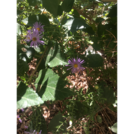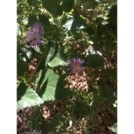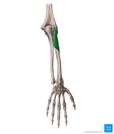
Students will work in teams to determine how to best conduct an experiment outdoors to see if plants need sunlight and water to grow.
- Subject:
- Life Science
- Material Type:
- Lesson Plan
- Author:
- rgothaii@rgdeuceenterprises.com
- Date Added:
- 07/22/2021

Students will work in teams to determine how to best conduct an experiment outdoors to see if plants need sunlight and water to grow.

Students will work in teams to determine conduct an experiment outdoors to see if plants need sunlight and water to grow.

Students conduct an experiment to determine whether or not the sense of smell is important to being able to recognize foods by taste. They do this by attempting to identify several different foods that have similar textures. For some of the attempts, students hold their noses and close their eyes, while for others they only close their eyes. After they have conducted the experiment, they create bar graphs showing the number of correct and incorrect identifications for the two different experimental conditions tested.

Students are introduced to an engineering challenge in which they are given a job assignment to separate three types of apples. However, they are unable to see the color differences between the apples, and as a result, they must think as engineers to design devices that can be used to help them distinguish the apples from one another. Solving the challenge depends on an understanding of wave properties and the biology of sight. After being introduced to the challenge, students form ideas and brainstorm about what background knowledge is required to solve the challenge. A class discussion produces student ideas that can be grouped into broad subject categories: waves and wave properties, light and the electromagnetic spectrum, and the structure of the eye.

STUDENT ACTIVITY - 3rd - GA/TXThis is a distance-learning lesson students can complete at home. Students will explore the outdoors for examples of different plant structures and determine how plants use these structures to meet their needs.This activity was created by Out Teach (out-teach.org), a nonprofit providing outdoor experiential learning to transform Science education for students in under-served communities.

Students will explore the garden/outdoor classroom for examples of different plant structures and determine how plants use these structures to meet their needs.

This resource has been prepared for one semester of an introductory-level college biology course with foundational themes of evolution, ecology, and comparative body systems. The first unit explores the origins and defining characteristics of living things and compares the earliest and simplest life forms with more complex cellular life. One of the common features of all life is that it requires energy; the next section explores the why and how of energy acquisition and relationships between the metabolic pathways. After a primer on photosynthesis and energy production via respiration, the next few sections delve into the form and physiology of plants and animals, focusing on water and food transport in plants, and in the respiratory, circulatory, digestive and reproductive systems of diverse animals. These systems were selected to serve as an introduction to animal physiology because they can be easily interleaved with other core course concepts such as energy flow and nutrient cycling through ecosystems, population genetics, bioenergetics, or speciation. The final sections of the text provide a basis for understanding evolutionary change, biodiversity, and the history and relatedness of life on Earth.
Understanding Organisms is an adapted textbook remixed from a variety of openly licensed sources, with additional content introduced by the author. Throughout the chapters, embedded media and special content boxes linking a diverse collection of web-based resources (e.g., popular science articles, podcasts, interactive tutorials, simulations, etc.) promote engagement and independent learning. Many of these highlight the work of biologists from diverse backgrounds or make connections between the biology content and real-world concerns. Chapter content was adapted to improve accuracy and inclusivity in topics such as sexual reproduction, sex determination, and sexual selection. Each section includes interactive H5P content in the form of no-stakes practice activities with instant feedback that allows students to self-check their understanding while engaging with the text.

This laboratory manual is intended for use in a biology laboratory course taken by non-science majors, pre-biology, and pre-allied health majors.
Laboratory exercises provide students with experience in basic laboratory skills, gathering and organizing data, measuring and calculating, hypothesis testing, analysis of data, writing, and laboratory safety. The skill sets are designed to promote the development of critical thought and analysis. Students work with living and preserved specimens, and laboratory reagents and equipment.

oerc-1844 Biology is designed for multi-semester biology courses for science majors. It is grounded on an evolutionary basis and includes exciting features that highlight careers in the biological sciences and everyday applications of the concepts at hand. To meet the needs of today’s instructors and students, some content has been strategically condensed while maintaining the overall scope and coverage of traditional texts for this course. Instructors can customize the book, adapting it to the approach that works best in their classroom. Biology also includes an innovative art program that incorporates critical thinking and clicker questions to help students understand—and apply—key concepts.

BioNetwork's Introduction to Lab Safety covers important considerations including: Proper Attire, PPE (Personal Protective Equipment, Safe Environment, Safety Equipment, Following Directions

Lyophilization, or freeze drying, is an important process to the biopharmaceutical industry. Operate a virtual lyophilizer and explore the process of freeze drying a product.

This online simulation gives you a chance to practice using an analytical balance and recording measurements in your lab notebook.

Culture media is a liquid or gel designed to support the growth of a variety of different types of organisms or cells. In this interactive eLearning tool, we'll practice preparing culture media by examining which area of the bathroom has the most germs.

Metric Conversions is an excellent tool for refreshing your knowledge of dimensional analysis, English-to-Metric, Metric-to-English, and Metric-to-Metric conversions.

Take a self-guided exploration of a common laboratory microscope including its care, components, and usge.

Learn about molarity through this interactive scenario where you will assume the role of a new TA working with Dr. Orville Catalisk.

Moles can be a little confusing, but BioNetwork's new eLearning course can help! In this exercise, you will play the role of a new intern at a commercial chemical company. Your job is to help various departments with their tasks, both inside and outside the lab. Along the way, you'll learn about moles and be able to apply your knowledge to challenging scenarios.

You've just been hired as a quality assurance inspector for a research testing company. Your job is to talk to employees in the aliquoting department and identify pipetting-related CAPA, Corrective and Preventative Actions that your company should take.

In science, it is not unusual for us to use either very large or very small numbers in our measurements and equations. Before the advent of calculators, we used scientific or exponential notation to simplify handling these very large or very small numbers.

Significant figures are a way of showing the precision of a number or group of numbers. Significant figures are important because they tell us how good the data we are using are. Significant figures are critical when reporting scientific data because they give the reader an idea of how well you could actually measure/report your data.